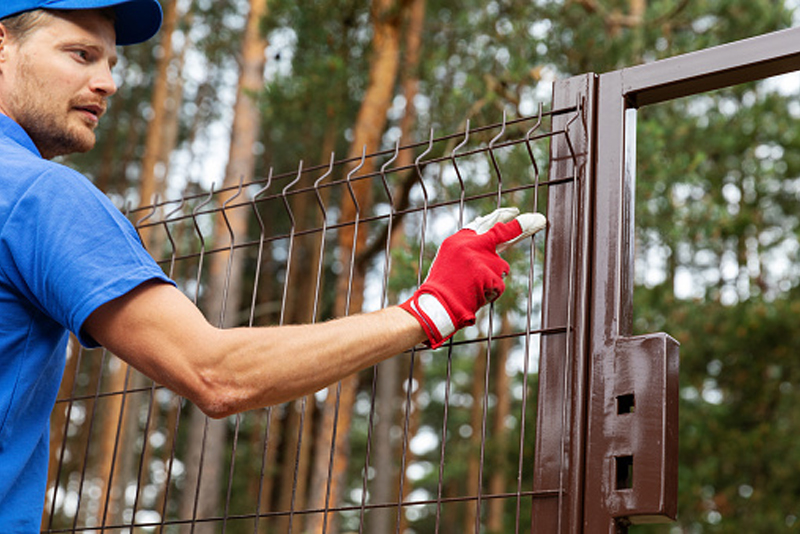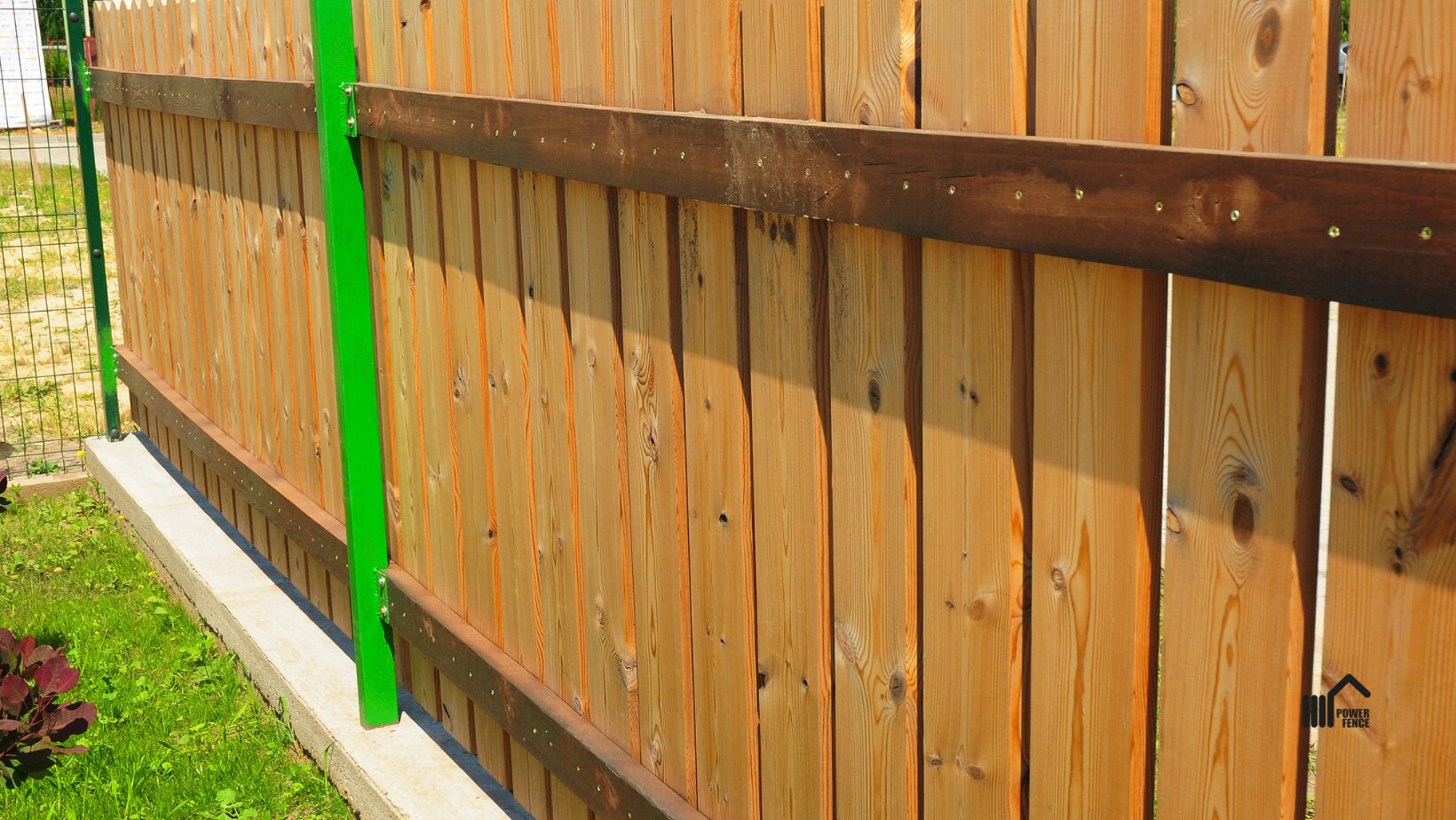Just How to Recognize Common Concerns That Need Immediate Fence Repair Work
When it pertains to keeping your fencing, it is vital to detect problems prior to they become larger problems. Consistently looking for indicators of decomposing wood, leaning panels, or corrosion can conserve you money and time over time. You could not understand just how climate and bugs can compromise your fence's stability. Allow's check out the typical signs that show your fencing requires prompt interest, so you can keep your property safe and looking its finest.
Indications of Rotting Wood in Wooden Fences
Have you observed your wooden fencing looking a bit worse for wear? If so, it may be time to look for signs of rotting timber. Examine the base of the articles and panels for soft areas. That's a clear indicator of rot if you press on the wood and it feels spongy or crumbles. Next off, search for discoloration or dark places on the timber-- these usually signal moisture damages. Pay attention to any peeling off paint or surface, as this can reveal the wood to additional degeneration. Additionally, a pungent, moldy scent can indicate fungal growth. Do not fail to remember to check links and joints; if they're loosened or dropping apart, the timber under is likely endangered. By capturing these indicators early, you can stop more considerable damage and keep your fence standing strong. Regular maintenance is essential to extending the life of your wood fence.
Leaning or Tilting Fencing Panels
If you've noticed your fence panels leaning or tilting, it's vital to understand what created it. This issue could indicate underlying structural damage that requires your interest. Allow's check out the typical reasons and the repair work choices available to get your fence back fit.

Root Causes Of Leaning Panels
When you notice your fence panels tilting or leaning, it's often a sign of underlying problems that require resolving. One typical cause is poor drain; extreme water can deteriorate the soil around the fencing posts, damaging their support. One more culprit can be strong winds or storms that push versus the panels, particularly if they're not appropriately anchored. In addition, the all-natural settling of dirt with time can create articles to move, causing a tilt. Pests, like termites, can jeopardize the stability of wooden panels, triggering them to lean. Finally, poor installation practices may lead to panels not being firmly set, leaving them susceptible to leaning under stress. Address these problems promptly to preserve your fence's honesty.
Signs of Structural Damage
Discovering leaning or turning fencing panels can be disconcerting, as these problems commonly indicate structural damage that needs immediate focus. When your fencing begins to lean, it might signify that the articles are changing or that the soil around them has actually worn down. Pay attention to voids between blog posts or panels, as these can also suggest instability. deck builder. Additionally, check for splits or splintering in the timber, which can weaken the general structure. It might compromise the stability of the fencing if you notice rust or corrosion on metal components. Remember, neglecting these indicators can result in extra extreme damages down the line, so it's necessary to examine the scenario quickly and do something about it before it worsens
Fixing Options Available

Corrosion and Corrosion in Metal Fences
If you own a metal fencing, you could see rust and corrosion creeping in gradually, particularly if it's exposed to moisture. These concerns not only influence the look of your fencing however can also compromise its structural integrity. To identify rust, seek reddish-brown spots or patches, which suggest the steel is oxidizing. Deterioration can spread out swiftly if left unattended, leading and weakening the fence to pricey repairs.To deal with rust and rust, you must clean the influenced areas with a wire brush and apply a rust-inhibiting guide. Once the guide dries, think about painting the fence with a weather-resistant paint to safeguard it additionally. Normal maintenance, such as inspecting for indications of rust and touching up paint as required, will certainly assist extend your fencing's life-span. Attending to these concerns immediately guarantees your steel fence stays strong and aesthetically appealing for years to come.
Splits and Divides in Plastic Fencing

Root Causes Of Plastic Damage
Vinyl fencing is prominent for its toughness, yet it can still deal with fractures and divides as a result of different factors. One major cause is extreme temperature level variations. When plastic broadens in the heat and agreements in the cold, it can deteriorate the material gradually. In addition, exposure to rough sunshine can bring about UV deterioration, making the plastic brittle. Physical impacts, like unintended crashes or heavy branches, can likewise develop cracks. Poor installation or utilizing low-quality products can aggravate these problems. Furthermore, age contributes; older vinyl secure fencing is a lot more susceptible to damages. Regular examinations can aid you determine these aspects before they bring about substantial issues. Take aggressive steps to guarantee your fencing stays solid and intact.
Repairing Cracks Efficiently
Although splits and divides in your vinyl secure fencing can be concerning, addressing them quickly can stop more damage and keep the fencing's look. Examine the dimension of the fracture. For small splits, a plastic repair work package frequently consists of sticky that can bond the edges, giving a smooth fix. Clean the area thoroughly prior to using the adhesive, ensuring it sticks appropriately. For larger splits, you may need to utilize a plastic spot. Cut the patch to size, use sticky around the edges, and press it firmly onto the split. Enable it to treat based on the manufacturer's directions. Routine upkeep and fast repair work can prolong your fencing's life-span, maintaining it looking excellent for several years to find.
Loose or Missing Out On Fencing Articles
Loose or missing fencing articles can weaken the security of your entire fence structure. It's crucial to resolve the problem immediately if you see any kind of posts leaning or wobbling. Examine for any indications of motion, as this can lead to further damages gradually. You can easily examine the trouble by giving each message a mild shake-- if it feels unpredictable, it's time to take click here action.For missing out on posts, you'll require to replace them as soon as feasible to maintain your fence's stability. Make certain they're securely secured in the ground with concrete or gravel for included stability when you install brand-new blog posts. If a blog post is loosened, tighten it by including additional support or driving it deeper into the ground.Ignoring these concerns can bring about bigger issues, like voids in your fencing and even total collapse. So, watch on your messages and stay proactive about fixings!
Damage From Climate and Natural Environment
Weather and natural environments can damage your fencing, leading to different kinds of damage that require punctual interest. Heavy rain can trigger timber to rot, making it weak and unstable. Snow build-up could bend or damage panels, while solid winds can uproot fence blog posts or create sections to lean.If you discover cracks or splintering in wood fences, it suggests drying because of intense sunlight exposure. Metal fences can corrosion if protective layers use off, specifically in coastal or moist areas.Inspect your fence consistently after storms or severe climate to catch any type of damage early. Resolving these concerns swiftly can save you from expensive fixings down the line. Don't wait up until a small issue turns into a major one; remain proactive and keep your fence top form to preserve both performance and curb allure.
Insect Problem and Termite Damage
When you discover indicators of bug problem or termite damage, it's vital to act swiftly to avoid additional devastation. Seek mud tubes along your fence or hollow-sounding wood, as these show termites are at job. You could likewise see small openings or frass, which is termite droppings resembling sawdust. If you spot any one of these indications, it's time to assess the damage.Don' t wait till it's far too late; bugs can endanger your fencing's honesty. Inspect the surrounding location for ants or beetles, as they might be adding to the problem. If you believe a problem, consider contacting a pest control specialist to treat the issue.repairing and confirm or changing damaged sections of your fencing without delay not just recovers its strength however also stops pests from spreading better. Remain vigilant to maintain your home pest-free and secure.
Frequently Asked Concerns
Exactly how Usually Should I Check My Fencing for Damage?
You should inspect your fencing a minimum of twice a year, preferably throughout spring and loss. Regular checks aid you detect damages early, conserving you money and time on fixings while keeping your property's appearance and safety and security.
Can I Repair a Fencing Myself or Employ a Specialist?
If you have the right devices and abilities, you can definitely fix a fencing yourself. Hiring a professional assurances top quality job and saves you time, particularly for complex repair work or substantial damage.
What Tools Are Needed for Basic Fence Fixings?
For fundamental fence repair services, you'll require tools like a hammer, screwdriver, pliers, a saw, a degree, and gauging tape. deck builder. Relying on the repair work, you may also call for nails, screws, or substitute boards
Just How Much Does Fencing Repair Normally Cost?
Fencing repair work expenses vary commonly, yet you can expect to pay between $200 and $1,500 depending upon materials, labor, and extent of damage. It's wise to get several quotes for the very best offer.
When Is the most effective Time of Year for Fencing Repair Works?
The most effective time for fence repair work is during light weather condition, typically in springtime or very early autumn. You'll stay clear of extreme temperature levels, making it easier to work and guaranteeing the materials established properly for lasting sturdiness (deck builder). Seeing tilting or leaning fence panels can be disconcerting, as these issues often suggest architectural damages that needs immediate interest. Loosened or absent fencing messages can undermine the security of your entire fence structure. Snow buildup may bend or damage panels, while solid winds can uproot fence articles or trigger areas to lean.If you see fractures or splintering in wood fencings, it's an indicator of drying out due to intense sun exposure. Steel fences can corrosion if protective finishes put on off, especially in coastal or damp areas.Inspect your fence regularly after tornados or severe climate to catch any kind of damage early. Fence fixing costs vary widely, yet you can anticipate to pay between $200 and $1,500 depending on materials, labor, and level of damage